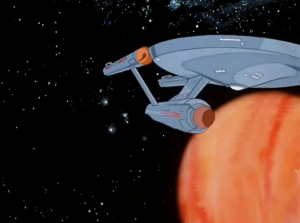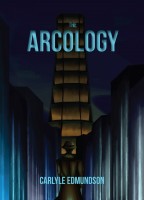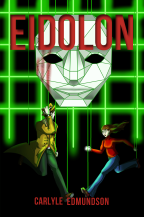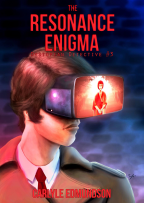Sci-Fi and Animation
- January 19th, 2015
- Posted in Opinion/Analysis
- Write comment
 One of the things that I, for whatever reason, rarely get around to talking about here is animation. When I recently highlighted the fact that some of those alien costumes and makeup application processes used in live action series can be brutal, I made sure to point out that one of the few exceptions to the “TV aliens must be human-like” is if CGI is used to create the alien from scratch. Which does, of course, bring up the question: why don’t we see more science fiction told exclusively through animation?
One of the things that I, for whatever reason, rarely get around to talking about here is animation. When I recently highlighted the fact that some of those alien costumes and makeup application processes used in live action series can be brutal, I made sure to point out that one of the few exceptions to the “TV aliens must be human-like” is if CGI is used to create the alien from scratch. Which does, of course, bring up the question: why don’t we see more science fiction told exclusively through animation?
It’s not completely unheard of for big-time franchises to get animated adaptations. Star Trek had its own animated series in the 70’s, and Stargate Infinity was definitely a thing that existed for a while. But both of those have been relegated to non-canon status by their parent shows, and that’s often the case with animated spinoffs. The only exceptions are in the Star Wars universe: The Clone Wars and Star Wars Rebels are both considered canon at this point, with the former the only spinoff to have escaped the fate of the rest of the Star Wars Expanded Universe when the franchise was purchased by Disney. But if you’ve ever seen any of those shows, you’ll know they all have one thing in common: all three are aimed at a significantly younger audience than their parent franchises. There are a couple of reasons why that is.
Firstly, it’s due to the fact that animation is seen as a children’s medium in the USA and many other Western nations, for no clear reason. It has a stigma attached to it that has proven quite difficult to shake; much of it stems from Disney’s vice-like grip on the medium for the majority of the twentieth century, to the point where something that’s animated is automatically assumed to be appropriate for children. If it turns out not to be, then it’s the filmmaker who gets in trouble, not the careless parent who decided to show adult animation to their kids. TVTropes refers to this as the “Animation Age Ghetto” and it’s a bizarrely powerful force. What’s funny is that a lot of the classics of animation, even ones that are thought of as being for kids now (like Looney Tunes) were originally shown in theaters for adult audiences.

Like crazy bird aliens, for example. How radically different it can be is part of why it’s non-canon.
So, even though animation can offer the ability show the kinds of unreal vistas and incredible creatures that live action series will struggle with out of sheer budgetary reasons, a lot of animated shows can’t find an adult audience or get in trouble when they’re watched by children. In the case of Star Trek: The Animated Series (from this point on, TAS), they even managed to get all the original actors back to voice their animated counterparts, which theoretically should have made it just as appealing to fans of the original series as a live action continuation. And yet even TAS had to make concessions to the Saturday morning cartoons block in which it aired, with silly things like more Tribbles and a visit to a fiction planet. The more alien-looking crewmembers that were only possible due to animation ended up being wasted, and as a result were entirely forgotten by the time the movies came around.
There’s also the fact that quality animation can often times be just as expensive as filming live action, and companies aren’t always willing to pull out the cash to pay for it. TAS has a number of coloration issues, moments of reused footage, and general low-quality, Scooby Doo-esque animation. This half-assed animated look tends to make the show seem like its overall quality is lower, causing the entire show to be perceived as bad even when other aspects (such as writers and actors) are almost unchanged from TOS. When you combine this perception of low quality with the idea that “cartoons are for kids,” it tends to evoke the rather cynical idea that this animated series is purely a cash-in, designed by the series’ owners to attract kids and get them to buy merchandise. You know, like Transformers. There have even been cases over the years where critics have gotten upset when animated works DIDN’T push merchandise. That’s just insane to me.
Stylization also comes into account for animated works to a far greater extent than in live action. There’s a “generic TV look” you can always fall back on to help keep the world on screen feeling real, but with animation a style has to be chosen. And sometimes your fans won’t necessarily like that style that you’ve decided on. Take Star Wars The Clone Wars, for example. I find the style of the show extremely ugly, personally speaking. The characters look like they’ve been sculpted out of clay, and I really can’t get past that fact and enjoy the show for what it is. It’s a very subjective thing, completely independent of quality, and there’s not much that can be done about it. Animated works that are produced outside the context of a franchise or series generally have it easier in this regard; it’s not hard to accept the universe presented on screen the way it is when there’s no live-action version to compare it to, and often times these independent animated works are beautifully stylized from the start.
One of the few exceptions to animation being treated so poorly is anime, which we’ll get to another day. It’s a shame that there’s not more animated sci-fi out there; remember how amazing Avatar was in theaters? Now realize that the film is essentially animated, with only a few live action segments. There could be so many more amazing worlds like that out there, thanks to animation. Someone just has to break those stereotypes and remind the rest of country that animation doesn’t have to be for kids.





No comments yet.